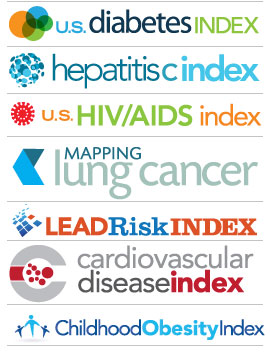Cardiovascular Disease Index
Cardiovascular Disease Index Thursday, October 4th, 2012The Cardiovascular Disease Index (CVD Index) provides interactive statistical information on CVD nationwide and at the regional, state, county, metropolitan, legislative-district, and zip-code levels, as well as by age, gender, and race/ethnicity. Users may create customized maps and graphs to support educational, advocacy, and public-affairs initiatives.
Minorities in the United States experience disparities in cardiovascular health that include higher rates of obesity, hypertension, hypercholesterolemia, heart disease, and stroke.[1] The purpose of the CVD Index is to locate areas where CVD is concentrated as well as to identify affected and at-risk population groups.
The CVD Index uses data from the following sources:
* Behavioral Risk Factor Surveillance System data for 2000 through 2009[2]
* US Census 2000[3]
The National Minority Quality Forum applies small-area analysis to the data to identify CVD disparities and produce CVD Index maps.
For more information on the CVD Index, please contact us.
Notes:
1. George A. Mensah, Ali H. Mokdad, Earl S. Ford, Kurt J. Greenlund, and Janet B. Croft, “State of Disparities in Cardiovascular Health in the United States,” Circulation.
2. Centers for Disease Control and Prevention, Behavioral Risk Factor Surveillance System Survey Data (Atlanta, GA: US Department of Health and Human Services, Centers for Disease Control and Prevention, 2000ñ2007), http://www.cdc.gov/brfss/index.htm.
3. US Census Bureau, Census 2000, Summary File 1, prepared by US Census Bureau, 2001, http://www.census.gov/census2000/sumfile1.html (accessed January 2008).


